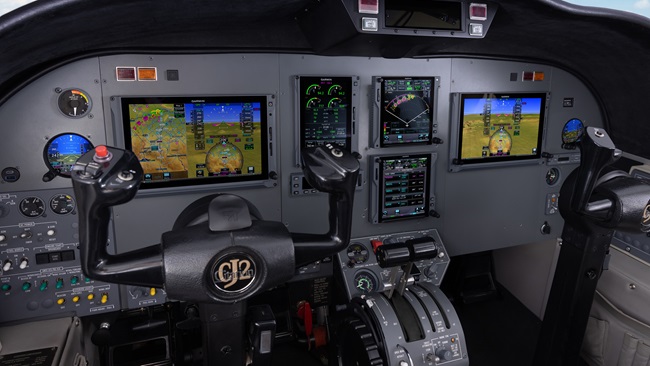FAA seeks removal of NavWorx UATs
Proposed AD affects 800 ADS-B units
The FAA proposed an airworthiness directive (AD) on Oct. 20 that would require removing certain NavWorx Inc. model ADS600-B remote-mounted universal access transceivers (UATs) from the aircraft in which they have been installed, and would prohibit their installation on any aircraft. The products provide Automatic Dependent Surveillance-Broadcast (ADS-B) Out and In on the 978-MHz frequency. The FAA estimates that approximately 800 U.S.-registered aircraft would be affected by the proposed AD.
The AD comes on the heels of an unapproved parts notification issued by the FAA on Oct. 14 affecting specific NavWorx UATs.
“NavWorx has implemented a design change by revising its software for ADS-B units, Model ADS600-B part number (P/N) 200-0012 and 200-0013 and Model ADS600-EXP P/N 200-8013,” the FAA stated in the notice of proposed rulemaking that would establish the AD. “The design of the units includes an internal uncertified GPS source. ADS-B units with an uncertified GPS source are required to broadcast a SIL [Source Integrity Level] of 0. The software revision (version 4.0.6) resulted in the units broadcasting a SIL of 3. This design change was not approved by the FAA and rendered the units noncompliant with TSO-C154c. Because the ADS-B unit incorrectly broadcasts a SIL of 3 instead of 0, the unit could communicate unreliable position information to ATC and nearby aircraft, resulting in an aircraft collision.”
NavWorx ADS-B units with part numbers 200-0112 and 200-0113 do comply with TSO C-154c, and are not subject to the proposed AD, the FAA said.
The proposed AD would require removing affected ADS-B units from aircraft before further flight, and prohibit their installation on any aircraft. UATs subject to the proposed AD include all model ADS600-B units with part numbers 200-0012 and 200-0013, and model ADS600-EXP with part number 200-8013. The unapproved parts notification only applied to part numbers 200-0012 and 200-0013 with software release 4.0.6 through 4.1.0. The notification recommended that affected NavWorx UATs installed in an aircraft “not be operated, and should be removed or deactivated.”
“We disagree with the FAA’s position that the units supposedly communicate unreliable position information,” the company said in a statement provided by NavWorx President Bill Moffitt late Oct. 20. “The FAA has never shared with us any instance of our units doing so, there is no support for this claim in the docket, and we are unaware of any unit doing so. In fact, for two and a half years the FAA had no problem with the ability of our units to correctly communicate the position of aircraft with the units.”
Because of a March 2015 FAA notice that it would in January 2016 deny TIS-B access to ADS-B units that were uncertified and broadcasting with a SDA of 0, the company said, it implemented a minor software change so the units would broadcast a SIL of 3, to ensure continued access to TIS-B data. “The proposed AD would deny these units access to TIS-B data,” the statement said. “The units subject to the proposed AD are neither uncertified nor do they broadcast with a SDA of 0.” The company said it intends to file comments on the NPRM and encourages its customers to do the same. “In the meantime we continue to work with the FAA to resolve our disagreements.”
“This is a commercial matter that NavWorx needs to address with its customers,” said Justin Barkowski, AOPA director of regulatory affairs. “AOPA will be providing comments to the FAA in response to the proposed AD before the deadline. In the meantime, if a member has installed an affected ADS-B unit, we recommend the member immediately deactivate the unit and wait for resolution of the proposed AD from the FAA.”
On Oct. 20, the ADS600-B was not available for purchase in the NavWorx online store.
The full text of the proposed AD is available online. The FAA will accept comments on the proposal until Dec. 19. Instructions on how to comment are included in the notification.




